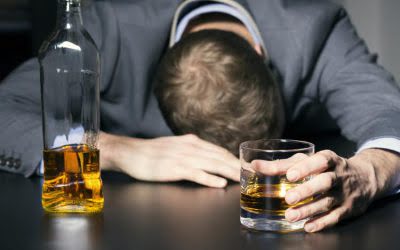In 1999, nearly 40 percent of people under age 21
who were victims of drownings, burns, and falls tested positive
for alcohol. Youth constituted 7 percent of nonfatal and 30
percent of fatal alcohol-related drownings and burns (Levy et al.,
1999). From there, it affects the central nervous system (the brain and spinal cord), which controls virtually all body functions. Adolescents who drink are also more likely to engage in risky sex, like having sex with someone they don’t know or failing to use birth control.
The mean length of stay was 4.9 days and the mean cost was $19,200 per stay. In 2011, 189,000 persons under 21 visited emergency departments due to alcohol use. This represents 43% of all underage emergency departments visits due to drug abuse.
Alcohol and the Adolescent Brain
If your pattern of drinking results in repeated significant distress and problems functioning in your daily life, you likely have alcohol use disorder. However, even a mild disorder can escalate and lead to serious problems, so early treatment is important. It’s important to talk to your child (at every age) about the dangers of alcohol. Teens often take their first alcoholic drink because they get pressured by their friends or peers. Peers also will tell your child that alcohol makes them feel good and gives them confidence. They may say that there’s no harm in drinking and that everyone drinks.
- For instance, suggest they participate in sports, volunteer, or join a club.
- If someone drinks large amounts of alcohol in a short period of time, they’re at risk for alcohol poisoning.
- In a recent editorial in The BMJ, a trio of scientists pointed out that there are three periods in life when the brain goes through major changes and is particularly vulnerable to the effects of alcohol.
Even if the younger person manages to get their alcohol use under control, the legal consequences of underage drinking can be life-long problems. In the case of long-term negative outcomes, the key question is
whether reducing underage drinking would also reduce those outcomes. Moreover, many
underage individuals who start heavy drinking in their late teens
give it up as they reach their late 20s and 30s.
Treatment for Inhalant Addiction
A comprehensive approach that includes effective policy strategies can prevent underage drinking and related harms. People ages 12 to 20 drink 3.4% of all alcohol consumed in the United States.4 Although youth dangers of teenage drinking drink less often than adults, when they do drink, they drink more. More than 90% of all alcohol drinks consumed by youth are consumed through binge drinking5 (see the “What Is Binge Drinking?” box).

Teens who drink are also more likely to get into fights and commit crimes than those who don’t. Millions of readers rely on HelpGuide.org for free, evidence-based resources to understand and navigate mental health challenges. You’ve found bottles of alcohol hidden in your child’s room and regularly smelled alcohol on their breath. You’ve noted the steep drop-off in their schoolwork, abrupt changes in their behavior, and the loss of interest in their former hobbies and interests. Teenagers often rebel against their parents but if they hear the same information from a different authority figure, they may be more inclined to listen.
Drinking and Driving
Tell your child to expect peer pressure and encourage them to talk to you when those times occur. Teenagers who abuse alcohol can pose serious problems to others and themselves as well. For example, drunken youngsters can become aggressive if police officers question them. These teenagers can also be violent among themselves or become aggressive with neighbors, parents, and relatives. Even teenagers who are known for getting excellent grades can make a 180-degree turn in personality and become susceptible to poor judgment calls. At the moment of this writing, anyone who wants to consume alcohol in the United States of America needs to be at least 21 years old.
For kids and teens, that usually means having three or more drinks at one sitting. Young people who binge drink are more likely to miss classes at school, fall behind with their schoolwork, damage property, sustain an injury, or become victims of assault. Films and TV can make it seem that every “cool”, independent teenager drinks. Alcohol advertising also focuses on positive experiences with alcohol, selling their brands as desirable lifestyle choices. Social media, in particular, can make your child feel like they’re missing out by not drinking or cause them to feel inadequate about how they live their life.